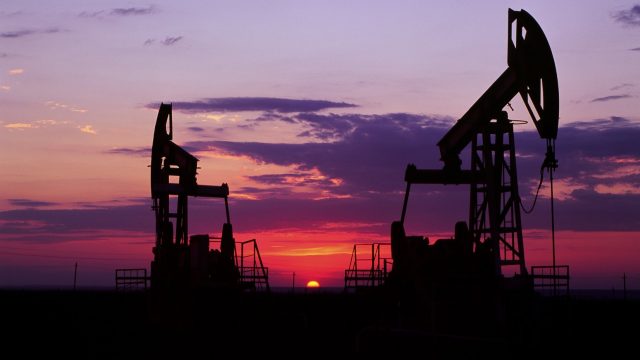Michael Filloon: Things Are Anything But Fine In North Dakota

Chris Berg had an excellent question on 6:30 Point of View’s ND Governor’s Candidate Forum. The question was quite simple, and covered North Dakota’s 2016 budgetary issues. Is ND just fine? This question revolves around our current budget gap created by gross miscalculations forecasting the price of oil. To answer this question, we must look ahead. Will oil prices continue to lag? If so, how far ahead must we prepare to ensure we don’t have this issue again going forward.
The oil glut is a major issue. US production hasn’t decreased much, but this could change quickly. Below are the current EIA production estimates for oil production in the US from 2015 to 2017.

The United States reached a peak oil production rate of 9.7 million barrels per day in April of 2015. In 2014, production grew 1.252 million barrels per day and another 721,000 barrels in 2015. The EIA believes we will lose 732,000 barrels/day this year.
Peak to trough, we could see an approximate decrease of 1.4 million barrels per day. Things may get worse before it gets better. Last week the EIA reported crude inventories increased by 10.4 million barrels. This put total inventories at 518 million barrels.
We have a working total storage of approximately 521 million barrels.
Most of the oil storage hubs around the world are very full. This means we have to not only decrease production to meet demand, we also have hundreds of millions of barrels of world supply to work through. This could keep prices low for a while.

If we bottom sometime in the 3rd quarter, we may see oil trade between $45 to $55 per barrel in the 4th. By 2018, oil prices may return to $70/bbl. Analysts like this number as a midpoint because it is the new marginal cost of oil.
Marginal production is higher cost with lower returns. US shale is interesting; as breakeven oil prices vary from $40/bbl to $65/bbl. This would include the Permian, Eagle Ford and Bakken. Operators will focus on areas with the best returns.

The above slide provides a general idea of how the oil markets will balance in 2016. It shows a is oil production decline of 600,000 barrels per day this year. The question is how much of this decrease will be seen in the Bakken.
The Bakken core has some of the best producing wells in the US, but costs are higher. North Dakota is in competition with other US plays in Texas and Oklahoma.
Bakken transport costs are some of the highest in the country. Distance to refineries and a lack of pipeline capacity are the main reasons. It only costs Saudi Arabia $1.90/barrel to ship oil to the US East Coast. This is why Bakken crude trades at lower realized prices than other areas of the country. As of February 17th, Bakken Sweet was selling for $16.50/bbl. The ND rig count was 41, down from an all-time high of 218.
Operators are starting to cut spending significantly in ND. More so than other areas of the country. Many operators have announced a stoppage of completing wells in ND. In the short term, ConocoPhillips and EOG Resources are among this group. Whiting (WLL) has cut its 2016 cap ex by 80%. Continental (CLR) cut cap ex by 66%, but has increased activity in Oklahoma.

Continental currently operates 4 Bakken rigs. It has 15 rigs in Oklahoma. Of its 71 net completed wells in 2016, only 26 will be in ND. Of its $920 million in cap ex, only $320 million will be spent drilling the Bakken.
It is also important to focus on lost jobs. Every job lost decreases state income tax revenues.
There are 145 total jobs lost for every rig pulled.
Since the peak, we have lost 177 rigs in North Dakota.
This estimate would produce an estimated total job loss of 25,665.
I would say that things are anything but fine in North Dakota.






